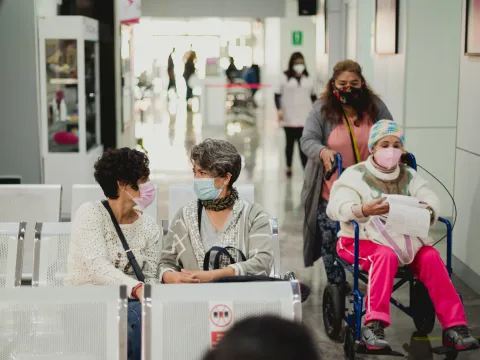Nearly half of cancer deaths are preventable through modifiable risk factors, underscoring the need for governments to support individuals in making healthy lifestyle choices with effective regulation of tobacco, alcohol, and ultra-processed food and sugary beverages, reduce pollution, provide more green spaces and opportunities for physical activity. Reducing the exposure to risk factors is called ‘primary prevention’.
Learn more about

Tobacco use is the leading preventable cause of cancer.
However, there are various risk factors and preventive actions that can be taken to reduce the risk of cancer:
Tobacco use is linked to around 15 types of cancer, including lung and liver cancers. Quitting smoking significantly improves life expectancy and quality of life.
Limiting alcohol intake reduces the risk of cancers such as mouth, oesophagus, and breast cancer.
Regular exercise and maintaining a healthy weight lower the risk of several cancers, including colon and kidney cancers.
Reducing exposure to ultraviolet radiation from the sun and avoiding tanning beds help prevent skin cancer.
Workplace exposure to substances like asbestos increases cancer risk, and policies to minimise these exposures can help.
Chronic infections cause about 16% of cancers globally, and vaccines against hepatitis B virus (HBV) and human papillomavirus (HPV) help prevent liver and cervical cancers.
- Individuals can adopt healthy lifestyles, avoid tobacco and excessive alcohol, limit sun exposure, get vaccinated, and encourage others to do the same.
- Governments can implement vaccination programmes, regulate tanning salons, ban asbestos, and promote public health campaigns.
- Schools can educate about cancer risk factors and promote good nutrition and physical activity.
- Employers can enforce policies to prevent exposure to carcinogens and promote healthy lifestyles.
- Communities can develop environments that support health and well-being.
Secondary cancer prevention focuses on screening and early detection
![]()
Routine screening tests such as mammograms for breast cancer, pap smears for cervical cancer, and colonoscopies for colorectal cancer are crucial. These tests can detect abnormalities before symptoms appear, allowing for early intervention.
![]()
Early detection significantly increases survival rates. For example, early-stage breast cancer can have a five-year survival rate of 99%, when appropriate treatment is available and provided in a timely manner, compared to 27% for late-stage detection. Regular screenings can lead to prompt treatment, reducing cancer mortality.
Public awareness and education about the importance of screening can encourage more people to participate in these life-saving tests. Healthcare providers should ensure accessible and affordable screening services to reach a broader population, especially in underserved areas.
By prioritising screening and early detection, we can further reduce the global burden of cancer.
![]()
Sources
- Union for International Cancer Control (UICC) : cancer prevention
- Cancer Research UK (CRUK): reduce your risk
- World Health Organization (WHO): health promotion
Explore more

Find out more about different types of cancers, risk factors and symptoms.

Cancer is a major health concern worldwide, being the second-leading cause of death globally.

Find out more about the origins, identity and who is behind World Cancer Day.
